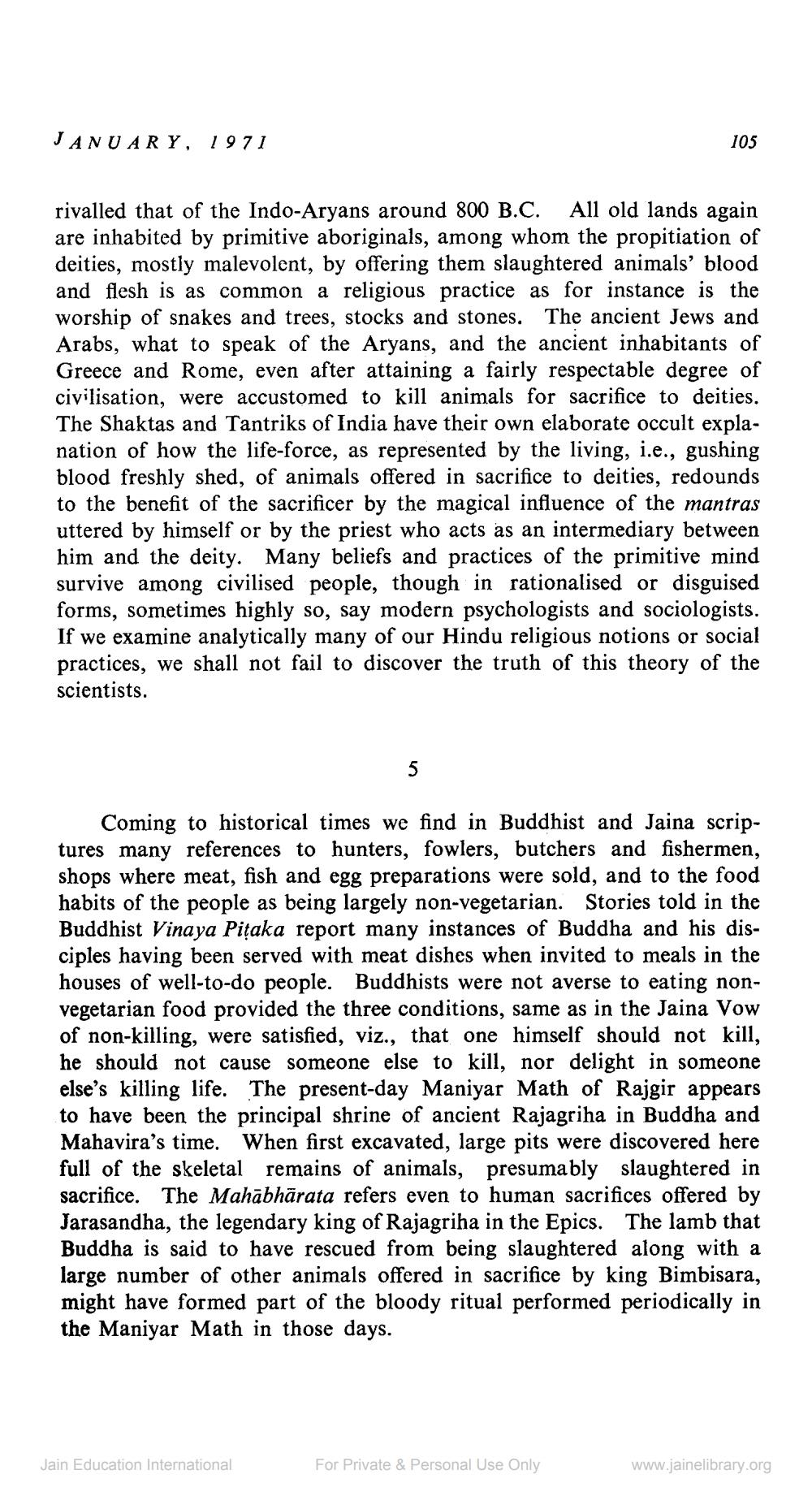________________
JANUARY, 1971
rivalled that of the Indo-Aryans around 800 B.C. All old lands again are inhabited by primitive aboriginals, among whom the propitiation of deities, mostly malevolent, by offering them slaughtered animals' blood and flesh is as common a religious practice as for instance is the worship of snakes and trees, stocks and stones. The ancient Jews and Arabs, what to speak of the Aryans, and the ancient inhabitants of Greece and Rome, even after attaining a fairly respectable degree of civilisation, were accustomed to kill animals for sacrifice to deities. The Shaktas and Tantriks of India have their own elaborate occult explanation of how the life-force, as represented by the living, i.e., gushing blood freshly shed, of animals offered in sacrifice to deities, redounds to the benefit of the sacrificer by the magical influence of the mantras uttered by himself or by the priest who acts as an intermediary between him and the deity. Many beliefs and practices of the primitive mind survive among civilised people, though in rationalised or disguised forms, sometimes highly so, say modern psychologists and sociologists. If we examine analytically many of our Hindu religious notions or social practices, we shall not fail to discover the truth of this theory of the scientists.
5
Jain Education International
105
Coming to historical times we find in Buddhist and Jaina scriptures many references to hunters, fowlers, butchers and fishermen, shops where meat, fish and egg preparations were sold, and to the food habits of the people as being largely non-vegetarian. Stories told in the Buddhist Vinaya Piṭaka report many instances of Buddha and his disciples having been served with meat dishes when invited to meals in the houses of well-to-do people. Buddhists were not averse to eating nonvegetarian food provided the three conditions, same as in the Jaina Vow of non-killing, were satisfied, viz., that one himself should not kill, he should not cause someone else to kill, nor delight in someone else's killing life. The present-day Maniyar Math of Rajgir appears to have been the principal shrine of ancient Rajagriha in Buddha and Mahavira's time. When first excavated, large pits were discovered here full of the skeletal remains of animals, presumably slaughtered in sacrifice. The Mahabharata refers even to human sacrifices offered by Jarasandha, the legendary king of Rajagriha in the Epics. The lamb that Buddha is said to have rescued from being slaughtered along with a large number of other animals offered in sacrifice by king Bimbisara, might have formed part of the bloody ritual performed periodically in the Maniyar Math in those days.
For Private & Personal Use Only
www.jainelibrary.org




